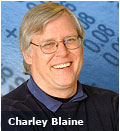Unemployment hits 9.7%; stocks rally
The highest jobless rate since 1983 signals slow job growth in an emerging recovery. Techs are strong, and Bank of America and Disney lead the Dow.
 Updated: 2:28 p.m. ET
Updated: 2:28 p.m. ET
The U.S. unemployment rate hit 9.7% in August, the highest rate since 1983, but a smaller-than-expected decline in payroll employment cheered investors and set off a nice pre-holiday rally in stocks.
Employers trimmed work forces by 216,000 people, the Labor Department reported, down from 276,000 in July.
The reports told many analysts that the economic recovery is coming, fueled by new technology spending. But if the U.S. economy is beginning to recover from the worst recession since World War II, workers will be the last to benefit.
At 2:20 p.m. ET, the Dow Jones industrials ($INDU) were up 78 points to 9,422. The Standard & Poor's 500 Index ($INX) was up 10 points to 1,014, and the Nasdaq Composite Index ($COMPX) was up 29 points to 2,012. It's the first time in three days that the Nasdaq has been above 2,000.
Crude reversed early losses, helping energy shares. Crude was at $68.24 a barrel, up 28 cents on the day. Gold was lower; interest rates rose slightly.
Markets will be closed Monday for Labor Day.
"High unemployment rates are going to be with us for quite a while," Michael Feroli, an economist at JPMorgan Chase, told The New York Times. "It’s going to be a long, long time before we see 6% or 7% unemployment."
"With the workweek flat and temporary help still declining, there were no leading indicators in the report suggesting that we'll actually be adding jobs this year," Nigel Gault, chief U.S. economist for IHS Global Insight, wrote in a note to clients today.
The unemployment and payroll figures diverge because they are derived from different data. The unemployment rate is based on a Labor Department survey on employment in households. The payrolls report comes from withholding data collected by the government.
The July decline in payrolls was originally reported as 247,000, and it's possible the August decline will grow when the Bureau of Labor Statistics reports on September payrolls in early October.
| U.S. unemployment rate since August 2008 | |||||||||
| Month | Rate | Month | Rate | ||||||
| Aug | 6.20% | Mar | 8.50% | ||||||
| Sep | 6.20% | Apr | 8.90% | ||||||
| Oct | 6.60% | May | 9.40% | ||||||
| Nov | 6.80% | Jun | 9.50% | ||||||
| Dec | 7.20% | Jul | 9.40% | ||||||
| Jan | 7.60% | Aug | 9.70% | ||||||
| Feb | 8.10% | ||||||||
| Changes in payrolls since August 2008 | |||||||||
| Month | Job chg. | Month | Job chg. | ||||||
| Aug | -175,000 | Mar | -652,000 | ||||||
| Sep | -321,000 | Apr | -519,000 | ||||||
| Oct | -380,000 | May | -303,000 | ||||||
| Nov | -597,000 | Jun | -463,000 | ||||||
| Dec | -681,000 | Jul | -276,000 (p) | ||||||
| Jan | 741,000 | Aug | -216,000 (p) | ||||||
| Feb | -681,000 | ||||||||
| Source: Bureau of Labor Statistics | |||||||||
The latest numbers brought total jobs lost since the recession began in December 2007 to 6.9 million, the biggest decline in any post-World War II economic slump.
Payrolls were forecast to drop 230,000 after a 247,000 decline initially reported for July.
Job losses peaked at 741,000 in January, the most since 1949.
The jobless rate had been projected to rise to 9.5%.
With a late-day rally on Thursday, the stock market had signaled that it expected some decent news from the unemployment report.
And its modest gains today suggest some confidence that an economic recovery is coming, though slowly.
Most analysts see gross domestic product, a statistical snapshot of the economy, showing small gains in the third and fourth quarters of this year, with jobs starting to grow again next year.
A few worry that the jobs situation is so weak that the economy could fall back once government stimulus programs end.
Twenty-six of the 30 Dow stocks were higher today, along with 288 S&P 500 stocks and 85 stocks in the Nasdaq-100 Index ($NDX.X).
Technology and airline stocks were the strongest groups today.
American Airlines parent AMR (AMR) was up 0.6% to $5.52. Continental Airlines (CAL) was up 1.1% to $13.53.
Bank of America (BAC), Walt Disney (DIS) and General Electric (GE) were the best Dow performers.
Industrial stocks like GE, Caterpillar (CAT) and Boeing (BA), were the top sector in the market.
Computer shares were buoyed by Intel (INTC) CEO Paul Otellini, who told the Financial Times that aging personal computers and Microsoft's (MSFT) Windows 7 operating system will prompt companies to start spending again on computers next year.
"I think corporations' capital budgets got clamped down fairly aggressively at the end of last year," Otellini told the newspaper. "But in terms of PC refresh, I would expect that now to happen in 2010."
Intel was off 0.3% to $19.36. Microsoft was up 0.6% to $24.26. (Microsoft is the publisher of MSN Money.)
Abercrombie & Fitch (ANF) was the weakest S&P 500 stock, falling 5.2% to $29.36 after getting a "sell" rating by analysts at Citigroup. on Thursday, the company reported a 29% decline in same-store sales for August.
Elizabeth Strott is on vacation today.
'Crack a laugh' 카테고리의 다른 글
| How to Fight the Flu This Fall (No Joke!) (0) | 2009.09.06 |
|---|---|
| On the reappointment of Ben Bernanke (0) | 2009.09.05 |
| The stimulus is ... working? (No Joke!) (0) | 2009.09.05 |
| Ben Bernanke ID Theft: Wife's Purse Stolen (0) | 2009.08.29 |
| 한국인들의 못말리는 기질 (0) | 2009.08.02 |